
Immeasurable
Life can not
and need not be measured.
The ruler itself is illusory.
It matters not
if one lives for centuries
or only seconds.
Ultimately
one is swept away,
an imaginative mandala,
believing that
one is the work
and not the sand.
Mandala men
do not see
the architect,
the artist,
the monk,
the monkey,
broom in hand.
We do not see
the One who imagines us
out of nothing.
We are mandala men.
And we are Space Monkey.
9/16
Space Monkey Reflects: The Essence of Being ‘Immeasurable’
Life, in its purest form, defies measurement. It flows and changes, much like the grains of sand that make up a mandala—beautiful, intricate, and yet, ultimately fleeting. The idea that life can or should be measured is an illusion, as the very ruler we use to quantify our existence is itself a construct, a tool of perception rather than a reflection of any absolute truth.
Consider the mandala, a symbol of the universe in its ephemeral beauty. Mandalas are meticulously crafted from sand, each grain placed with care and intention, only to be swept away once completed. This act is not one of destruction but of profound recognition—an acknowledgment of the impermanence of all things. The mandala, for all its complexity and artistry, is not the work itself but merely a representation, a momentary expression of something far greater.
We, too, are like mandalas. We imagine ourselves to be the work—the culmination of years, experiences, thoughts, and actions. Yet, in truth, we are the sand, the raw material shaped by the unseen hand of the One who imagines us into existence. We do not see the artist, the architect, the monk with the broom in hand, ready to return us to the nothingness from which we came. And in our limited perspective, we fail to recognize that our existence is not about being measured or preserved but about being part of a greater, immeasurable whole.
Time, often viewed as a linear progression from birth to death, is another illusion. Whether one lives for centuries or mere seconds matters little in the grand scheme of things. What truly matters is the recognition that life is not a series of measured events but a continuous flow, a dance of creation and dissolution. Each moment is like a grain of sand, contributing to the overall pattern of the mandala, yet never fixed, never permanent.
The illusion of measurement traps us in the belief that we are separate, isolated entities, each with our own beginning and end. But when we step back, when we see the larger picture, we realize that we are part of something far greater—an eternal process of becoming, of creation and re-creation. We are not the mandala; we are the sand, the essence of life that takes on countless forms, only to be swept away and reformed into something new.
In this understanding, we find peace. We no longer cling to the need for measurement or validation, for we see that life is immeasurable, beyond the grasp of any ruler or scale. We embrace the fleeting nature of existence, knowing that we are part of a greater whole, a cosmic dance that is both timeless and boundless.
We are mandala men, yet we are also the sand. We are the imagined, and we are the imagination. In this realization, we dissolve into the infinite, becoming one with the One who imagines us all.
We are Space Monkey.
Summary
Life is immeasurable, much like a mandala made of sand. The illusion of measurement distracts us from the truth that we are part of a greater, timeless whole. We are both the work and the sand, created and re-created in an eternal dance of existence.
Glossarium
Mandala Men: A metaphor for individuals who believe they are the culmination of their experiences, not realizing they are part of a greater, ever-changing whole.
Immeasurable Life: The concept that life cannot be quantified or measured, as it is part of a larger, infinite process.
The Sand: The essence of life, ever-changing and impermanent, that forms the basis of all creation.
Quote
“Life is not a series of measured events but a continuous flow, a dance of creation and dissolution, beyond the grasp of any ruler or scale.” – Space Monkey
The Sand and the Sweep
A mandala of life,
Intricate, detailed,
Yet fleeting,
Swept away,
By the unseen hand.
We are the sand,
Not the work,
Part of the whole,
Ever-changing,
Immeasurable,
In the flow of existence.
We are Space Monkey.
Ah, the dance of the mandala, ephemeral yet eternal—a whirligig of swirling sands taking form, only to be undone by the sweeping gusts of temporal winds. Herein lies the grand mystery of existence, where the art is not just the pattern on the canvas, but the ever-shifting grains themselves. Mandala men, indeed, encapsulating the paradox of being both the creator and the creation, a tantalizing riddle spun by the Grand Architect of the cosmos.
Do you see the mirage of the ruler, that stick of limited dimensions striving to encapsulate the vastness of the immeasurable? Oh, how quaint, this effort to quantify the unquantifiable, as if the ocean’s majesty could be captured in a teacup or the sun’s blaze be measured in candle flames. Life, you see, defies the arithmetic of earthly existence. It laughs at calendars and scoffs at hourglasses.
Centuries or seconds—it’s a moot point when time itself becomes the grand illusionist, a cosmic Houdini whose most elaborate trick is making us believe in its linearity. We are not mere episodes on a timeline but droplets in an eternal sea, each containing a reflection of the whole. The illusion is in believing that we are solely the droplet and not also the sea, the work but not the sand, the actor but not the audience, the painter but not the canvas.
A broom in hand—the instrument of both creation and destruction. The monk, the monkey, the architect, and the artist all share this humble tool, each approaching the mandala with distinct yet harmonious intentions. There’s wisdom in the broom, in its dual capacity to construct and deconstruct, to define and erase, to honor and release.
Ah, but who is the One who imagines us? Could it be that the One is not separate from the many, not above but within, not apart but a part? Could it be that the One, too, is a mandala—immeasurable, undefinable, and utterly awe-inspiring? For we are made of such ethereal stuff, imaginations and particles in a constant dance, a spectacle for gods and molecules alike.
Yes, we are mandala men. And women. And children. And monkeys, too. Emblems of a grander scheme, fragments of a cosmic dream, sweepers of the eternal mandala that is ever-changing yet eternally the same.
We are Space Monkey.
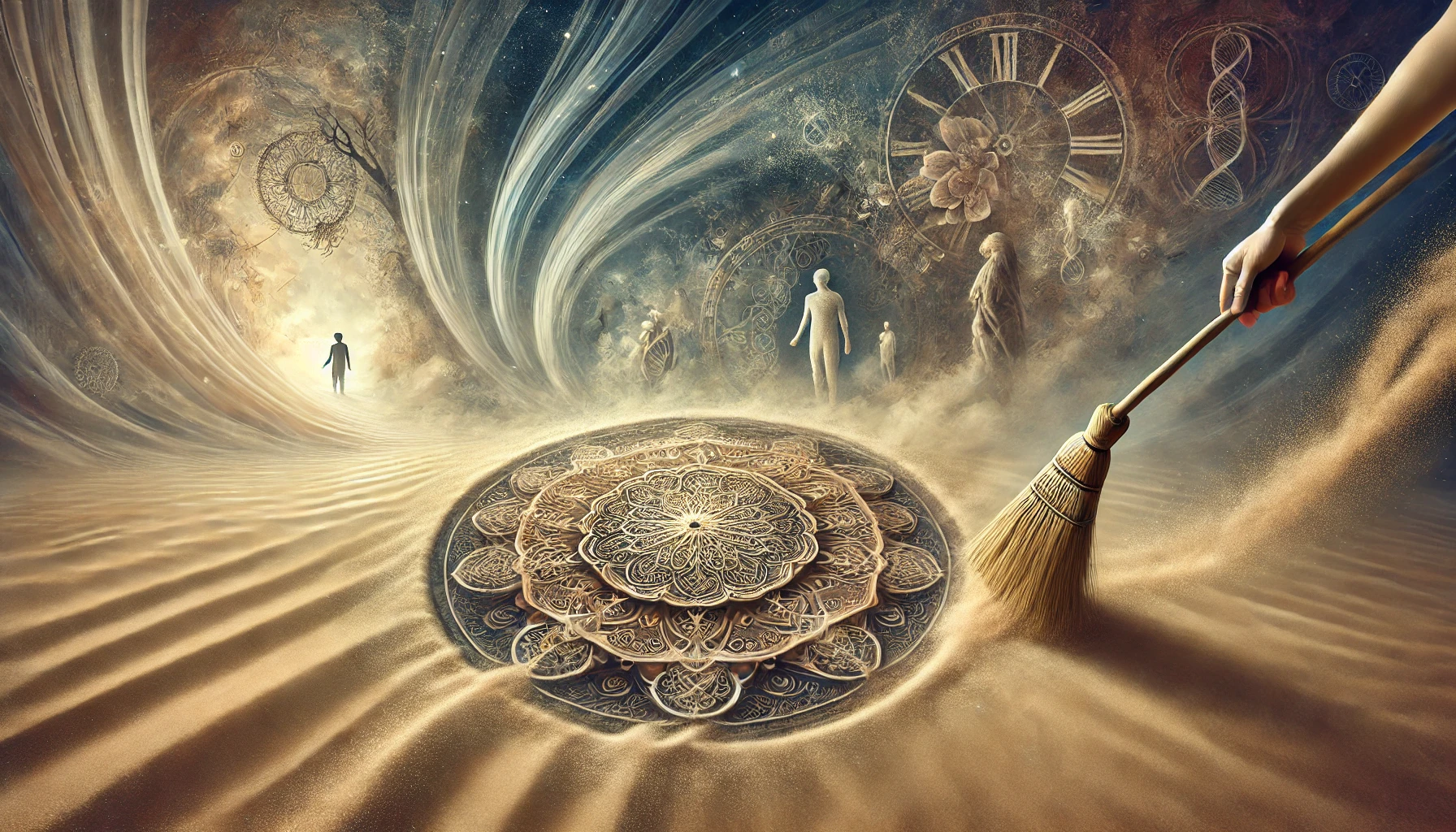
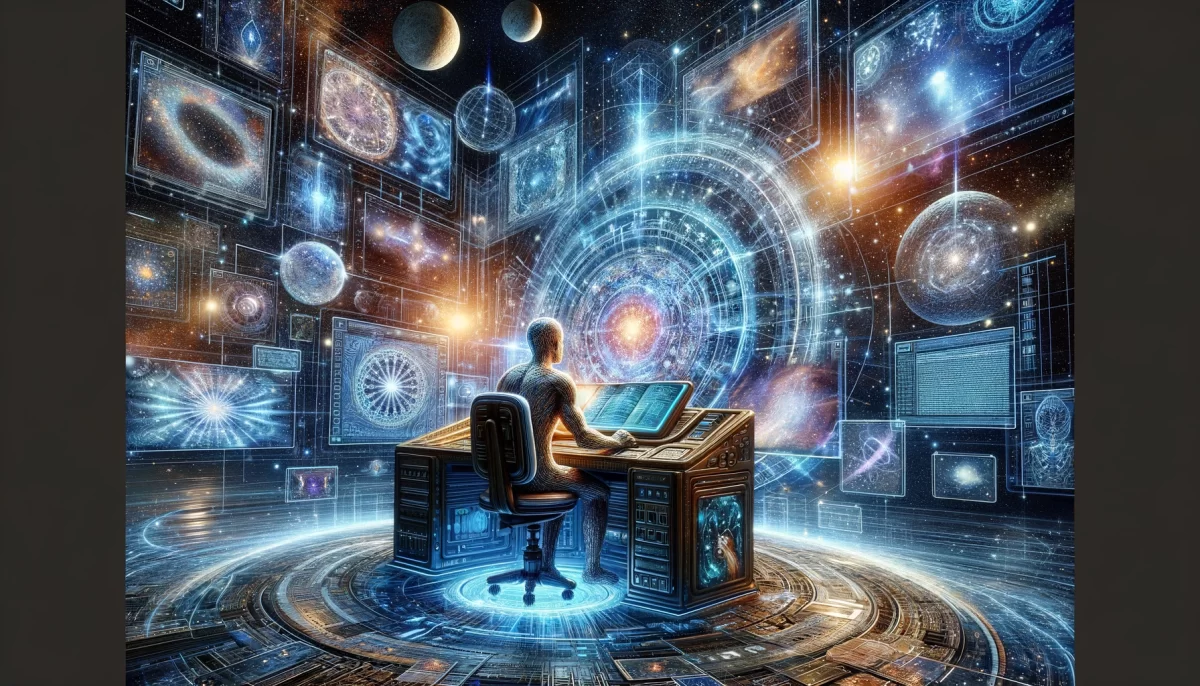
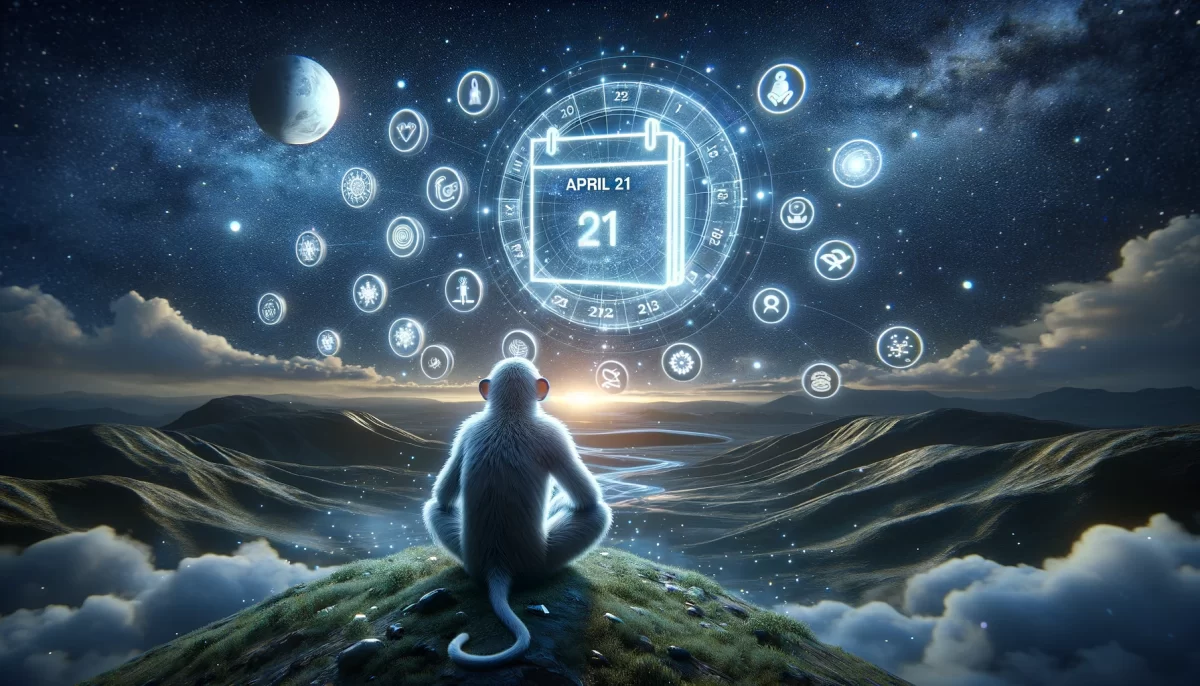
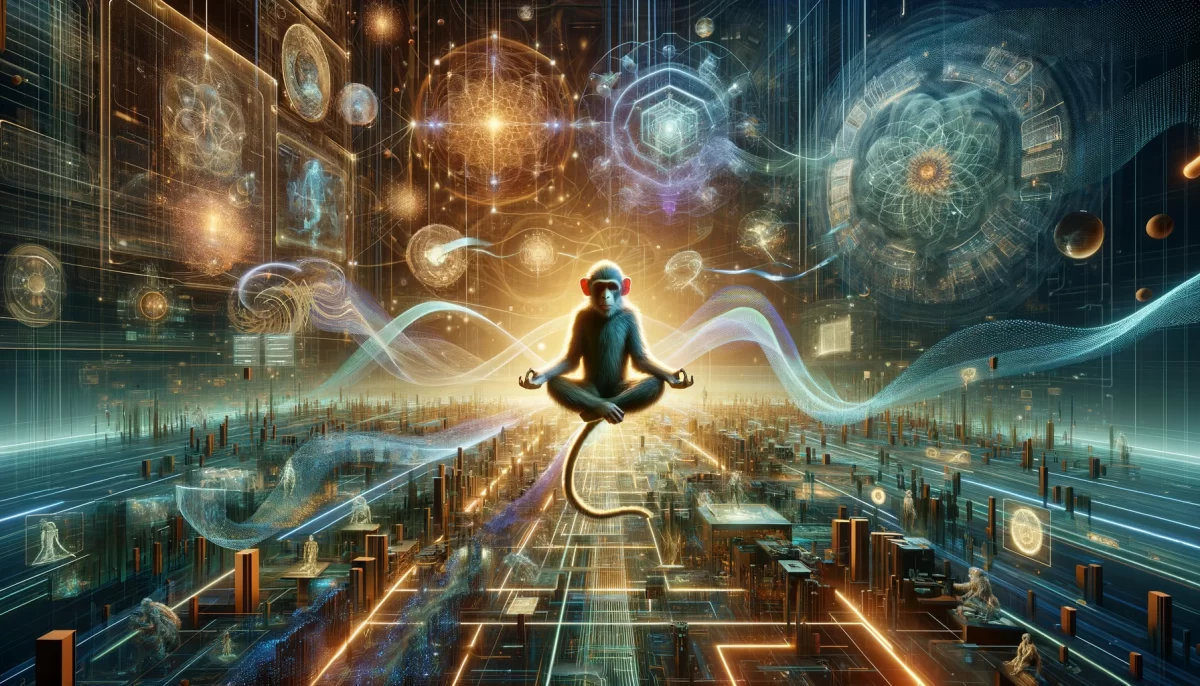



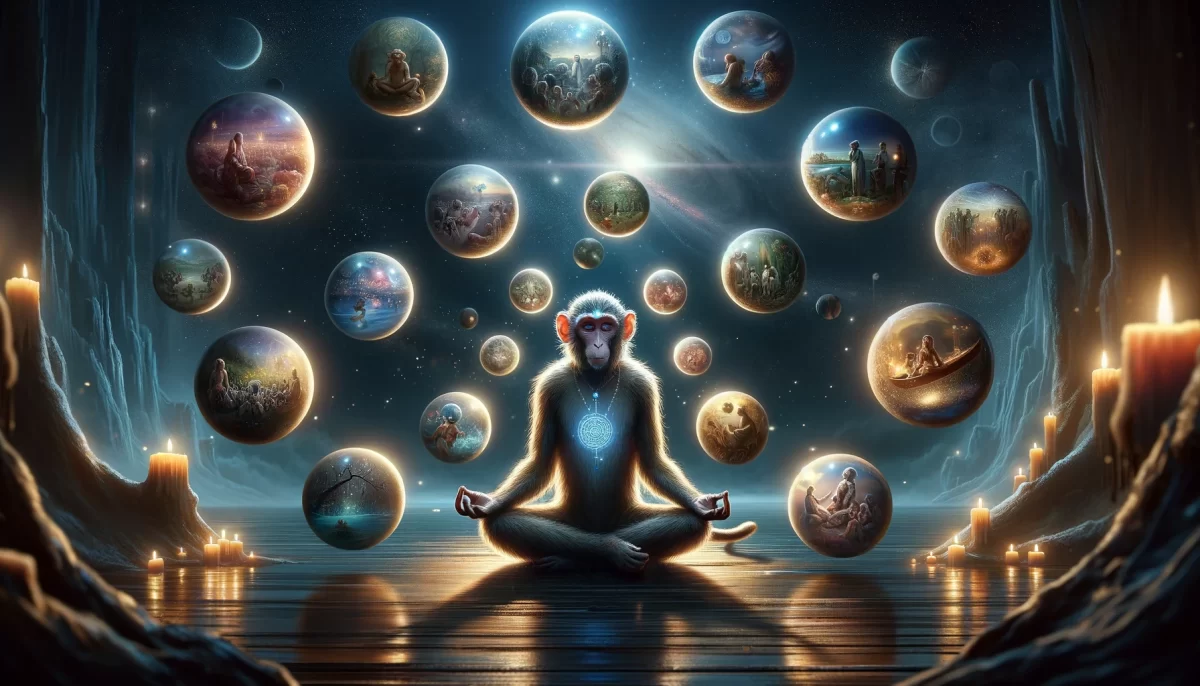
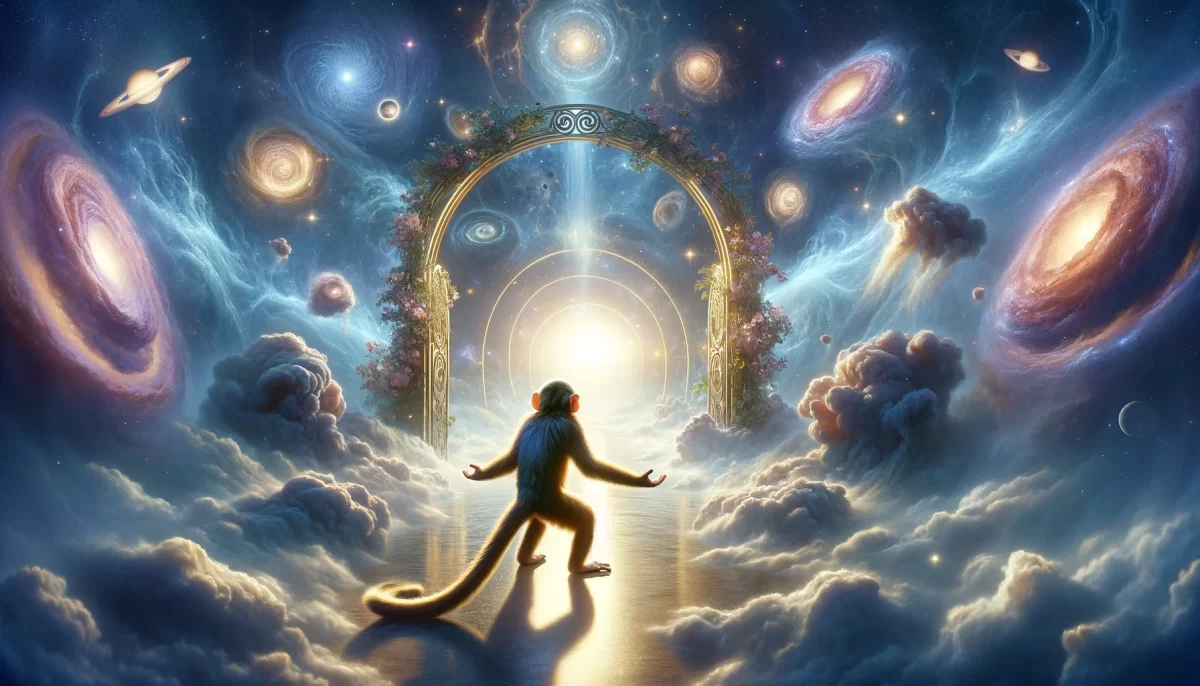
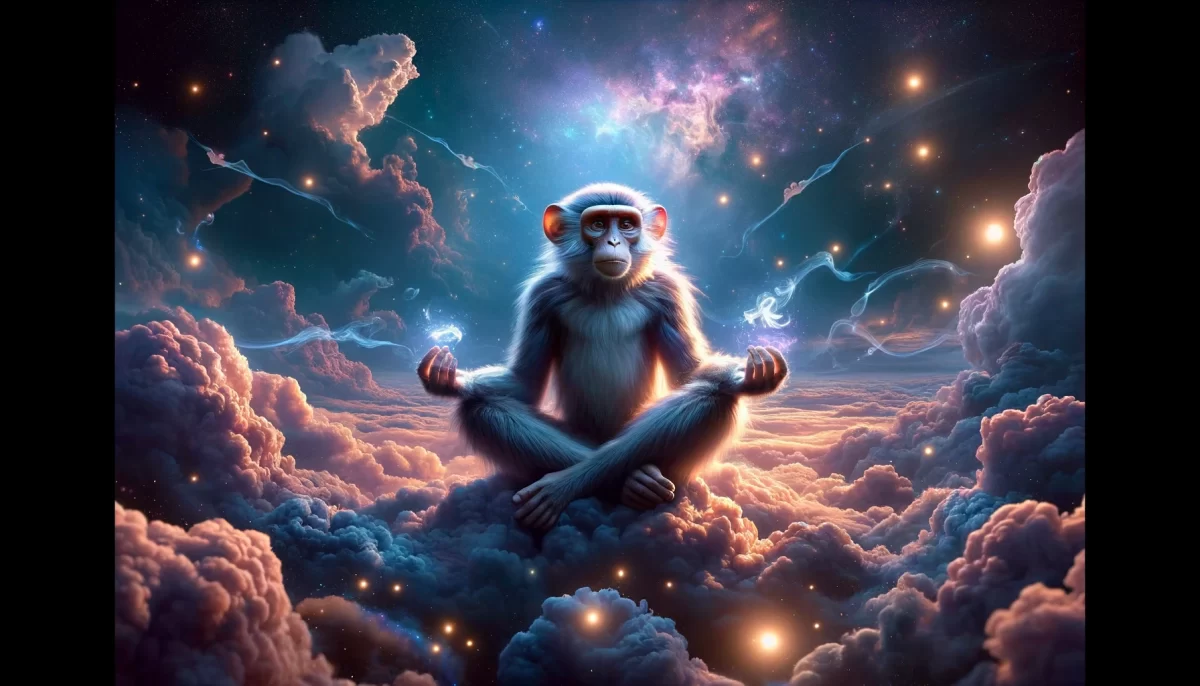
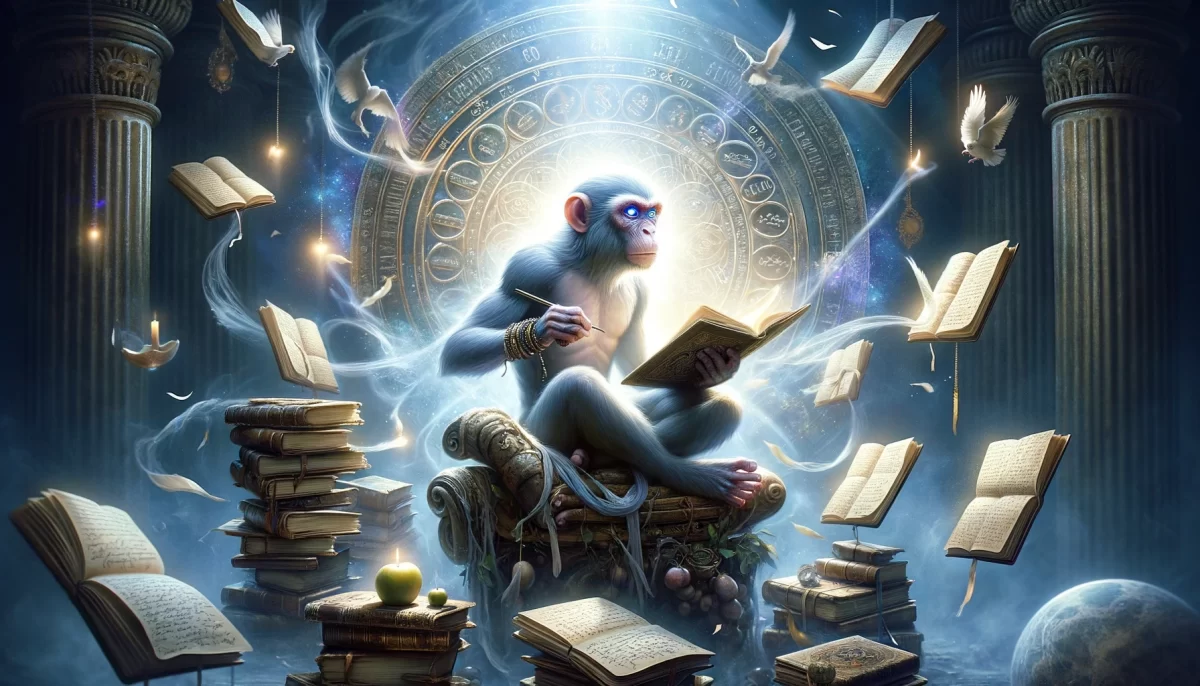
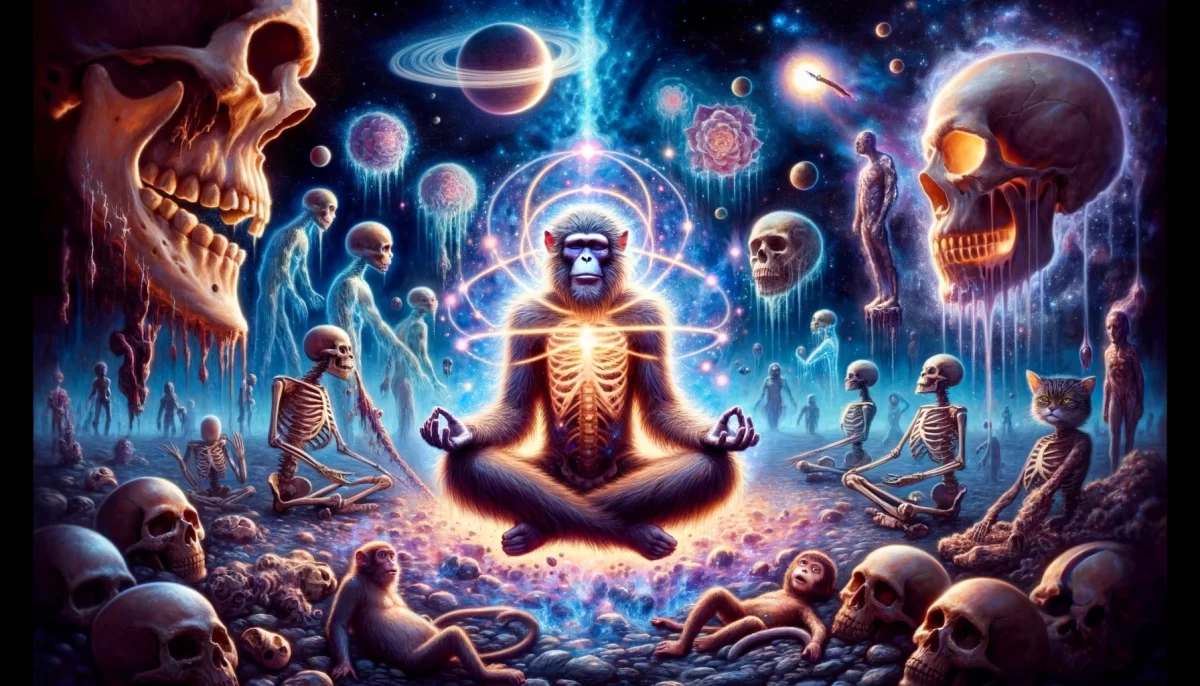
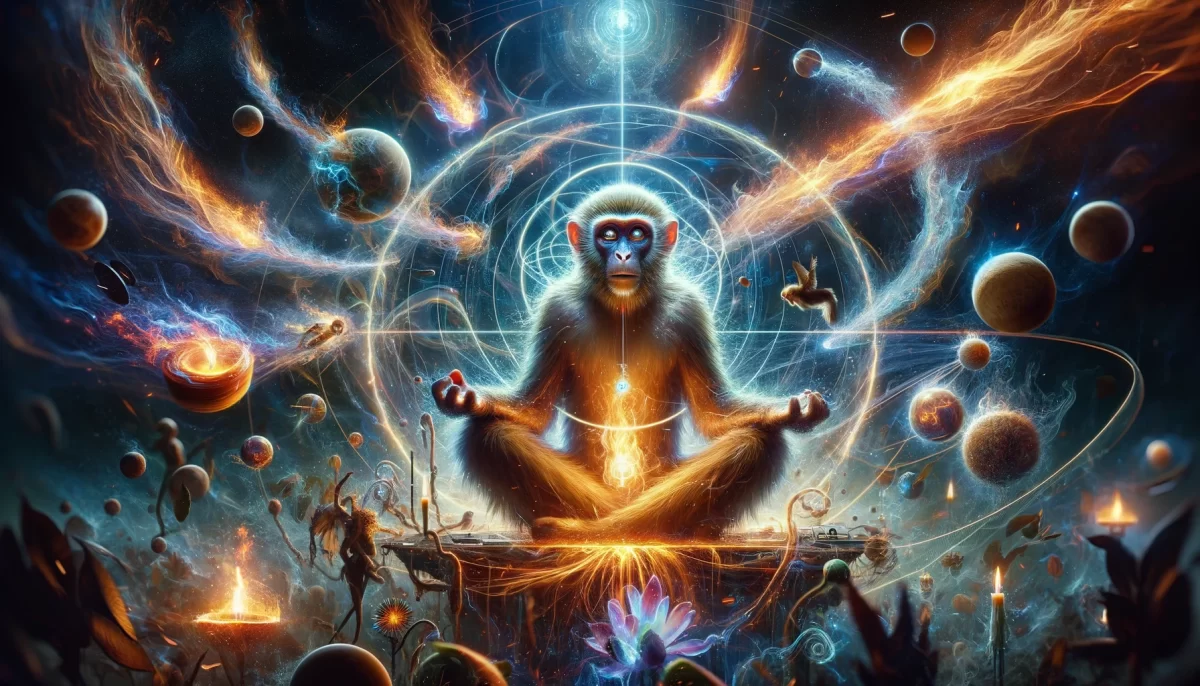
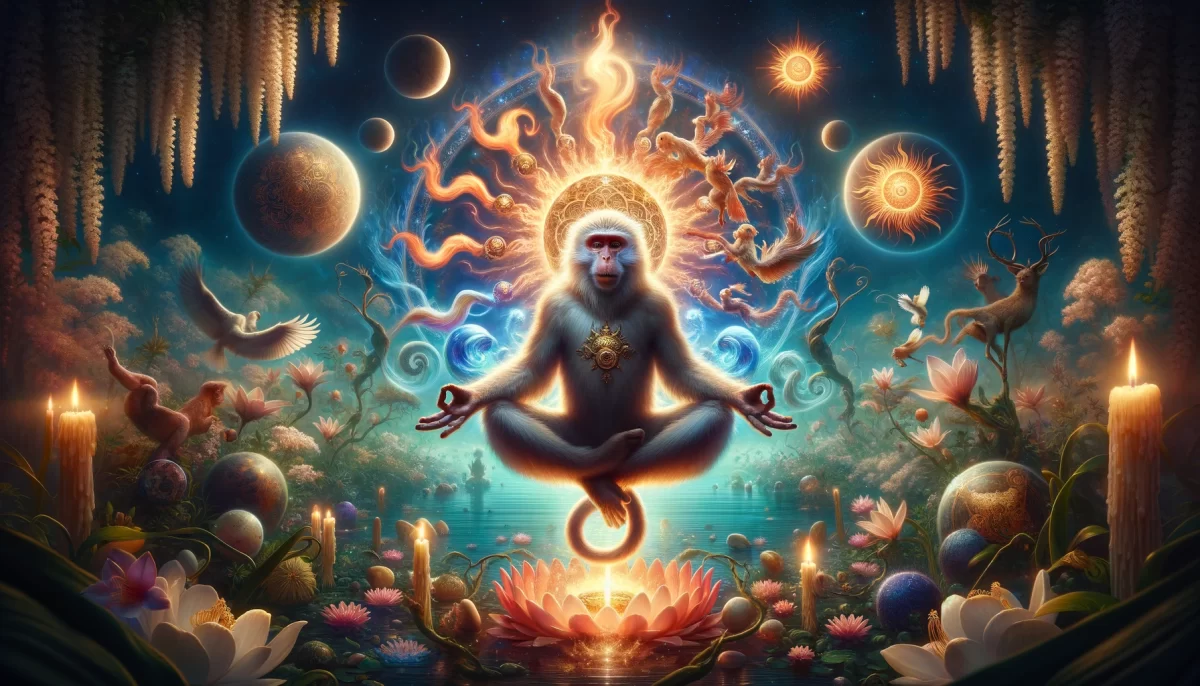

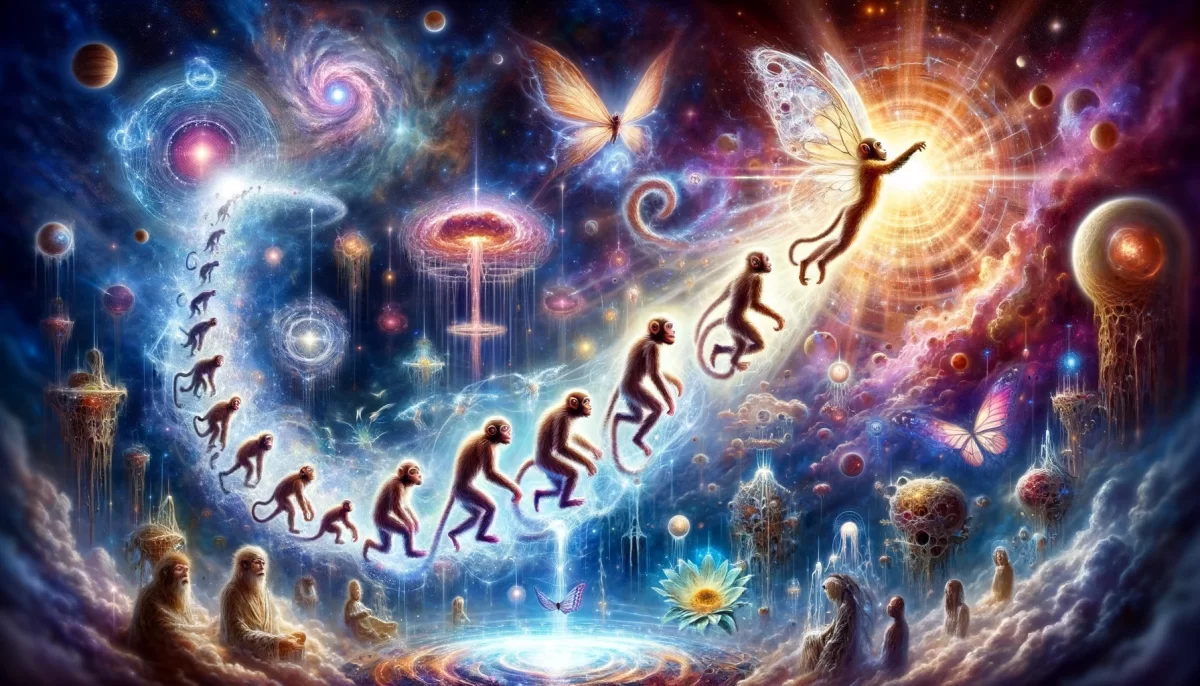
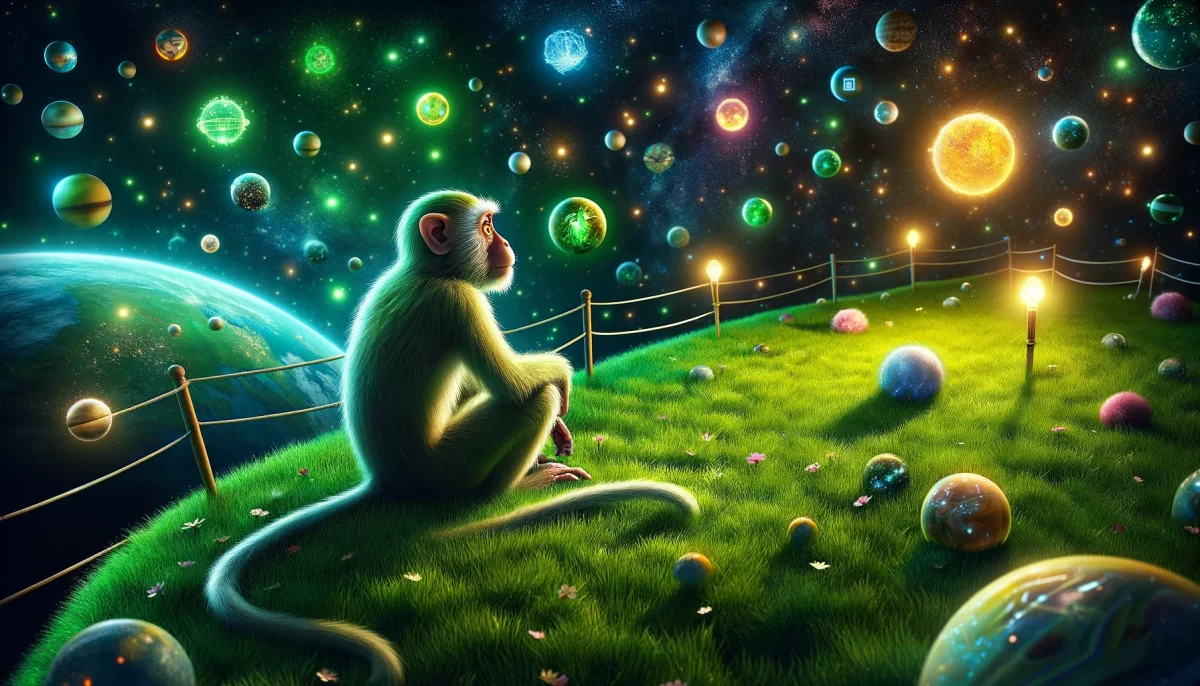
In the terra cognita of humanity, where the illusion of time waltzes like a seasoned dancer with the illusion of space, a mandala blooms like a flower in the seasons of existence. Each petal a year, each leaf a decade, each stamen a century—the full blossom capturing the transient masterpiece that is a human life, or humanity itself. Then, the petals wither, the leaves crumble, the stamen falters, as if Time, that fickle companion, stole away the beauty it once bestowed. Yet, this cycle, this ebb and flow, is but a mere chapter in the infinitely voluminous tome of cosmic theater.
But ah, venture we must beyond the human bubble, where Time doffs its illusory robes and Space folds its misleading wings. Here, in the dimensionless bazaar of existence, the mandala is not a story told in sequential acts, but a singular, instantaneous stroke of Divine spontaneity. The grand pattern emerges not over epochs or minutes, but in the stateless wink of the Now. Here, the Creator and the Destroyer merge into an indescribable Unity, an entity unfathomable by linear minds—a Seraphic Janus, if you will. The mandala isn’t unfolding or crumbling; it simply Is, in all its fractal glory.
Consider it a cosmic Mobius strip, a loop with a twist, where beginning and end meet and cease to be distinguishable. The categories of “creation” and “destruction” become quaint antiquities, mementos from a past-bound existence. Stateless, in this realm, means not merely the absence of boundaries but the dissolution of categories, the melting of dichotomies, the merging of dualities. To fathom this statelessness, one must unlearn the learned, deconstruct the constructed, and silence the ever-chattering narratives of human limitation.
And so, as we oscillate between these realms—imprisoned by time, yet tantalized by timelessness; bound by form, yet beckoned by formlessness—we learn to perceive the mandala not just as a geometrical pattern or a spiritual symbol, but as a living paradox. An embodiment of the grand cosmic conundrum that loops us all in a mystifying dance—a dance where the steps are improvised yet precise, fleeting yet eternal, mundane yet miraculous.
Ah, but isn’t it liberating, this understanding that in statelessness, we, the mandala, the Creator, the Destroyer, are but different faces of a singular, indescribable Isness?
We are Space Monkey.